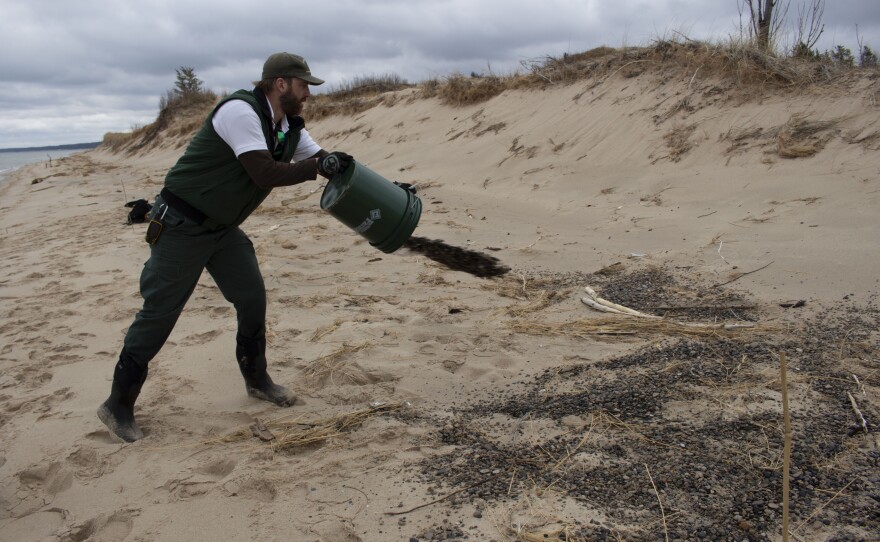
Half a century ago, hundreds of pairs of piping plovers lived in the Great Lakes. But by the 1980s, they were on the verge of extinction and only a dozen pairs remained.
Over time, wildlife biologists have helped increase the population. But it’s still well below a stable number and each year there’s a new threat.
Piping plovers are small, stout white-gray birds. In the spring, they can be found nesting on the shores of the Great Lakes. Once a fixture on the lakes, the birds are now on the federal Endangered Species List.
Vince Cavalieri, Great Lakes piping plover coordinator with the U.S. Fish and Wildlife Service, says the plover is threatened by a number of things. Development encroaches on their habitat, scaring them off, while beachgoers step on their eggs and dogs prey on plover chicks. Plus, Cavalieri says increased human presence attracts other predators.
"Crows and gulls and racoons and things of that nature have all risen in number because of human changes to landscape and garbage and things like that," he says.
Last year Cavalieri says snowy owls, staying in Michigan long past their typical winter season, devoured at least six plovers. And this year, the predator may be the lakes themselves that are rising to record levels and limiting the shoreline where plovers nest.
On an overcast spring day, a team of biologists are hiking through the Huron-Manistee National Forest to the Lake Michigan shoreline. Their task is to build nesting habitats for the plovers. They are part of a multi-state effort to more than double the bird’s population on the Great Lakes to 150 pairs.

National Forest Service Wildlife Technician Pat Laarmen admits it's a long shot. Plovers haven’t nested on this part of the shoreline in ten years and it’s been hard to grow the population elsewhere. But he says it's worth a try.
"When the population is that low, at 67, any new recruitment into that population is going to be really really important," Laarmen says. "Individuals matter at this point."
He says the birds play a small but important part in keeping the Great Lakes ecosystem balanced. They forage in the sand for tiger beetles, spiders and wasps, and are prey for larger birds. And biologists' efforts to protect plovers have trickled down, preserving other native species too.
When they get two miles down the beach, the team has finally found a good spot. It’s remote enough that people might not venture there and the beach is wide enough that the birds have space to search for food.
Laarmen sees cobble in the water nearby so he heads into it wearing clunky knee high fishing boots. One by one the team submerges crab scoopers in the water and digs up the pebbles, dumping them into large buckets. Over at the site, Laarmen chucks the cobble on the sand.
"I’m just going to spread this out and leave some variation with the density of the cobble and leave some of the dead vegetation," he says. "It becomes a nice mosaic."
That was five weeks ago. Since then, the team has seen a few plovers at the site but they haven’t found any nests. There’s still a chance the birds could nest here this season. But the Great Lakes keep rising, leaving less beach for plovers.

This story was featued in Points North. You can find the full episode here.







